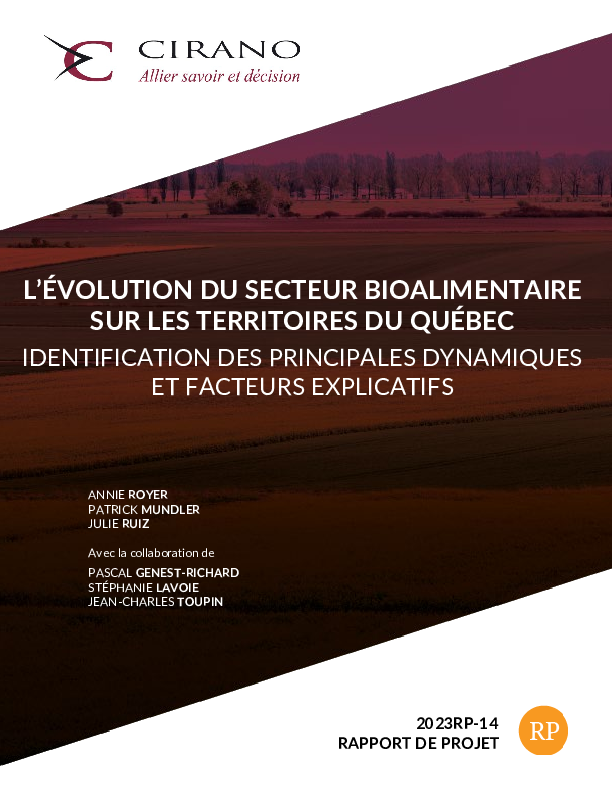L’évolution du secteur bioalimentaire sur les territoires du Québec. Identification des principales dynamiques et facteurs explicatifs
The Quebec food sector has undergone profound changes over the past few decades: specialization of businesses and territories, concentration within increasingly large companies, industrialization of production processes and intensification of resource use. However, these major trends mask different developments throughout the territory.
What are the best tools to support a sector in the midst of restructuring and to adapt to the contrasting dynamics of Quebec agriculture? This vast study proposes a clear diagnosis of the situation by characterizing the spatial dynamics of the bio-food sector from 1961 to 2016. “Spatial dynamics” refers to the way in which a phenomenon unfolds in a territory or changes over time. The authors are interested in three main phenomena: the presence and constitution of sectoral poles, agricultural territorial specialization, and the economic concentration of sectors in the territory.
This research provides a better understanding of the factors that have shaped the development of different bio-food sectors and reflects on the differentiated impacts of various factors such as government policies, agro-climatic conditions, market conditions, technology, societal, cultural and demographic factors depending on the territory. The authors show how government decisions to support or supervise the bio-food sector have major territorial consequences, hence the importance of taking this dimension into consideration more systematically, right from the development of programs, whatever they may be.




